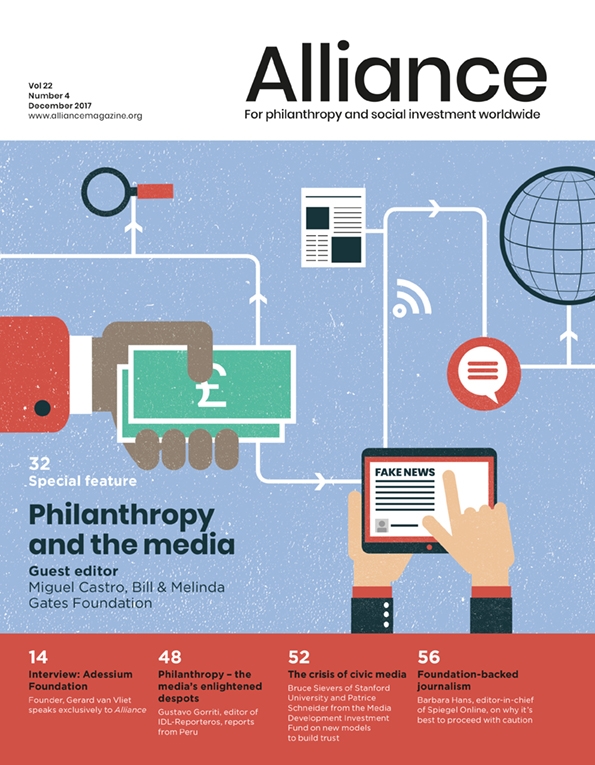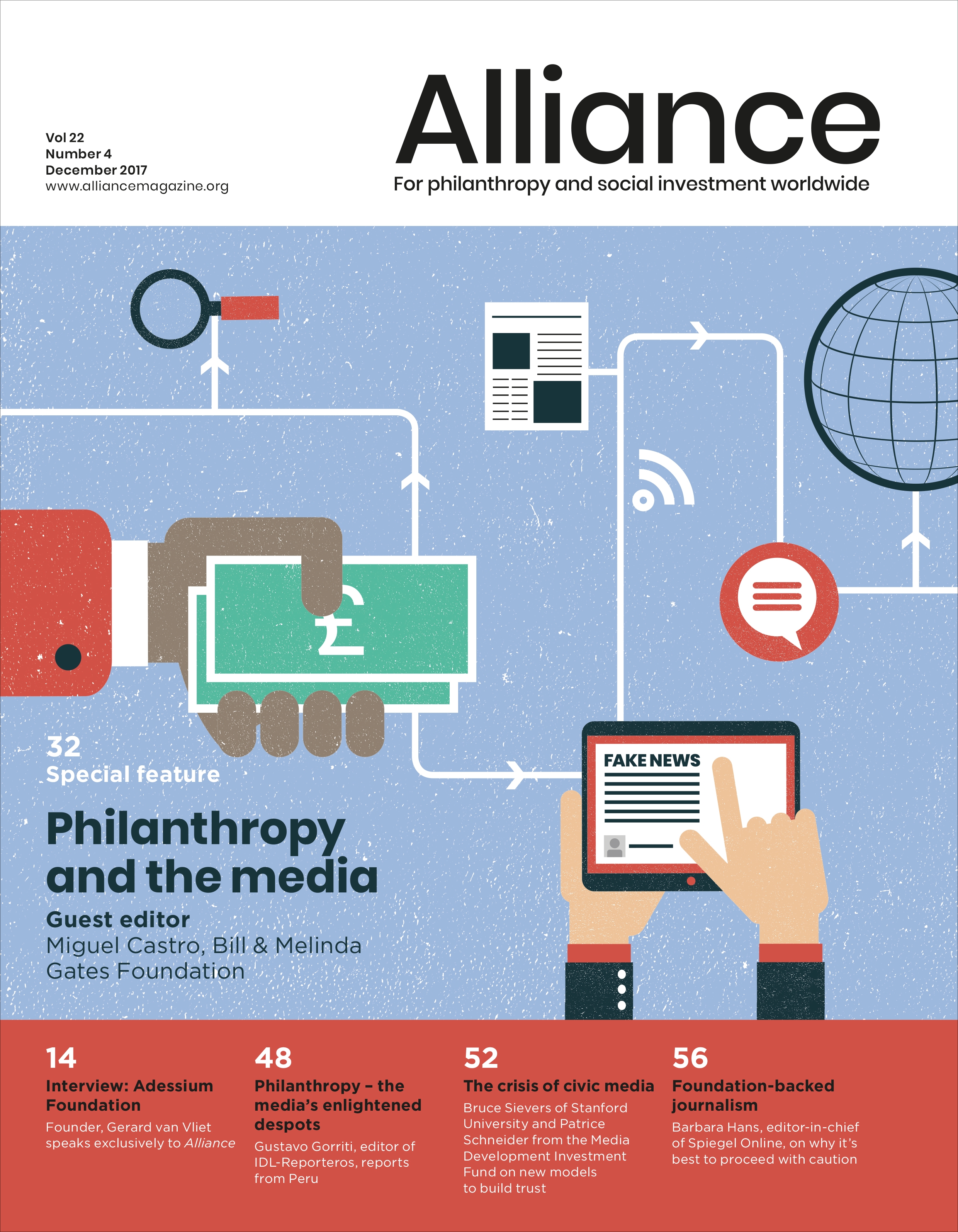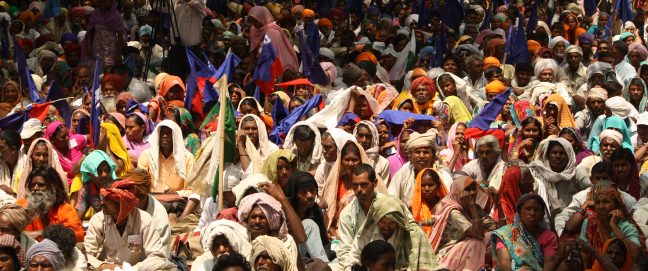The need for informed and rigorous coverage of philanthropy is greater than ever. As philanthropy grows in power and influence, assumes new forms and takes root in new markets, who is going to tell the story of philanthropy and hold it to account? Who will raise a mirror to the field?
Arguably, philanthropists in particular need a dose of critique and cross-examination because they lack the feedback loops of ballot boxes and bottom lines that – at least in theory – hold those in government and business to account.
 So who can be philanthropy’s critical friend?
So who can be philanthropy’s critical friend?
Foundation grantees can’t. The dominant relationship between funders and grantees makes feedback hard. If you’re on a starvation diet of short-term grants, it’s inadvisable to bite the hand that feeds you.
Philanthropy associations and consultants can’t either. While they do provide direction and in some cases leadership – Vikki Spruill of the Council on Foundation’s calls for greater diversity is one such example – their primary task is to serve members and clients.
Philanthropy scholarship can make an important contribution. But academic knowledge is under-developed and too weighted towards business schools, which tend to be naturally partial to philanthropy.
So what about the popular media and the philanthropy media?
Sadly, popular coverage lacks curiosity about the field’s institutions, systems, dynamics and people. This might change now that prominent titles like The Washington Post, The Atlantic, and London’s Evening Standard are owned by philanthropists, while others like The Guardian and Spiegel are funded by professionally-run foundations. But while these developments will increase interest in philanthropy, they could make objective coverage harder, not easier, notwithstanding efforts to ensure safeguards between funding and editorial content.
So if no one enjoys absolute independence, how can independent coverage of philanthropy be sustained? Here, the philanthropy media has an important role to play.
For over 20 years, Alliance has told the story of global philanthropy under the astute guidance of my predecessor Caroline Hartnell. Today, our special features and columns aim to give readers original and challenging thinking.
Meanwhile, in the US, newcomers like Inside Philanthropy pen crisp, and sometimes, cutting analysis, as do stalwarts like Non-profit Quarterly, Stanford Social Innovation Review, and Chronicle of Philanthropy.
But Alliance, for one, could do more if it had more resources. And it could say more if it had more independence.
Avoiding self-censorship in my editorial judgement is a daily hazard. Exactly how critical should we be towards the field that sustains us? Foundations give us the funding and sponsorship we need to survive – just enough to do our job but not enough to be fully independent.
Bruce Sievers and Patrice Schneider suggest a model of non-profit journalism that would be particularly suited to a non-profit philanthropy media – the creation of endowments to provide a regular income stream, a measure of financial stability, and some much-needed intellectual and editorial freedom.
But it takes a special kind of foundation to enable journalism that takes a critical view of its work. Yet the field’s long-term wellbeing will be served by backing the infrastructure and eco-system of philanthropy media. That could prove a more enlightened use of funding than spending charitable resources on public relations firms to promote one’s own programmes to media that don’t have sufficient capacity to do them justice.
A more informed debate would enrich all sides by giving the public and practitioners alike greater insight into philanthropy’s potential and limitations. At present, philanthropy lacks the mirror it needs and deserves.
Charles Keidan is editor of Alliance. Email charles@alliancemagazine.org.






Comments (0)